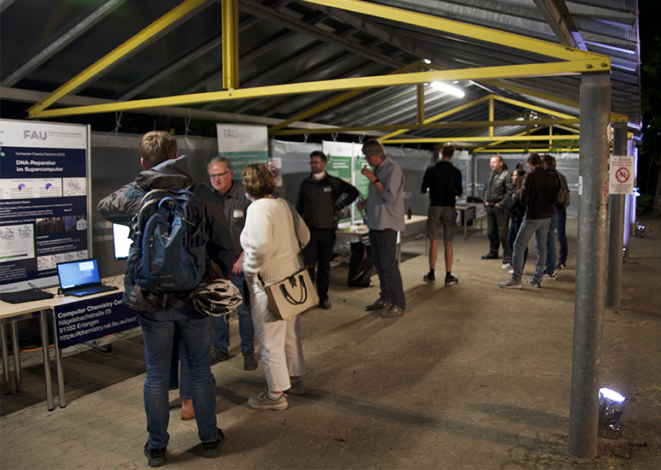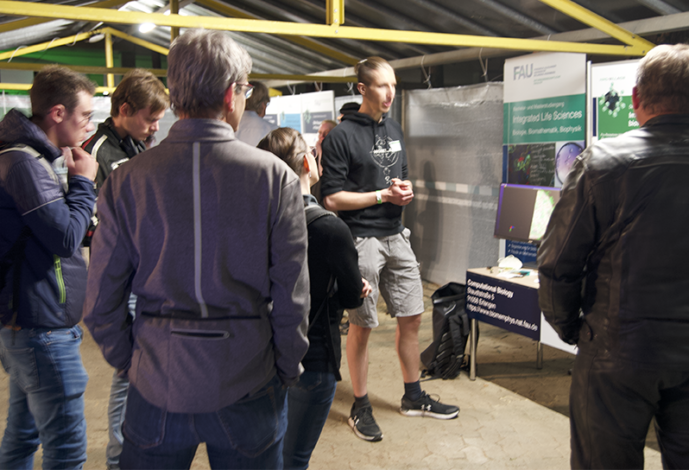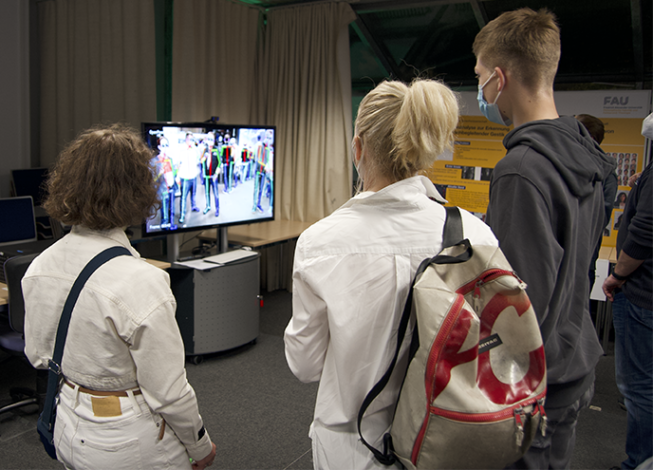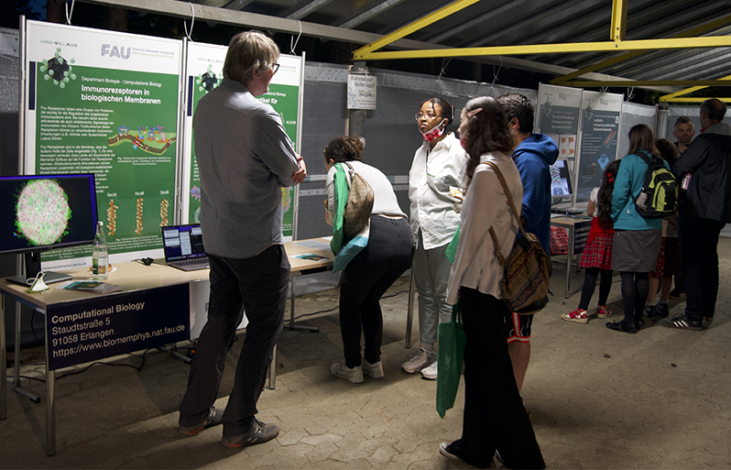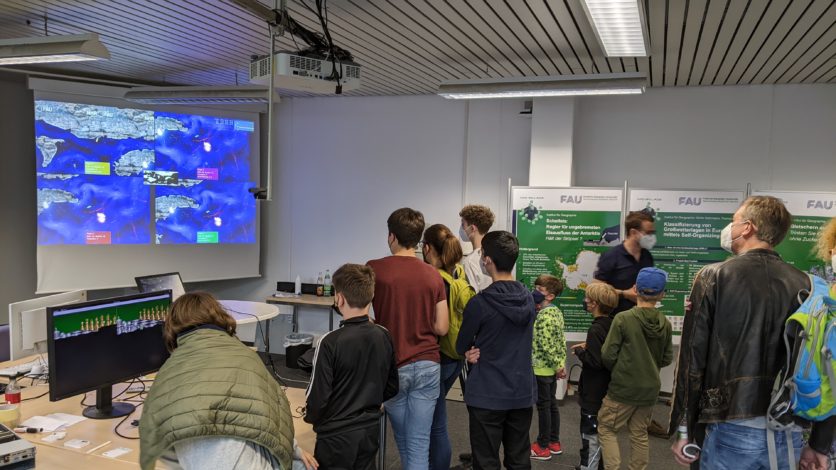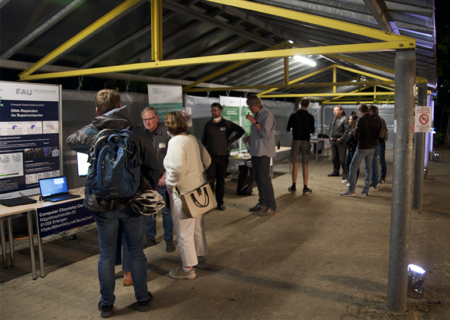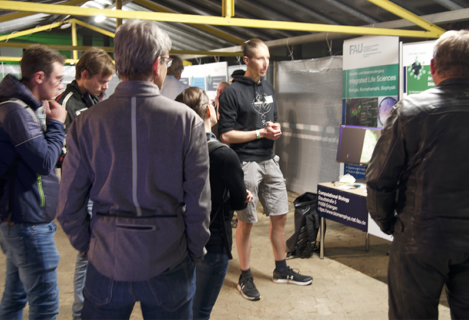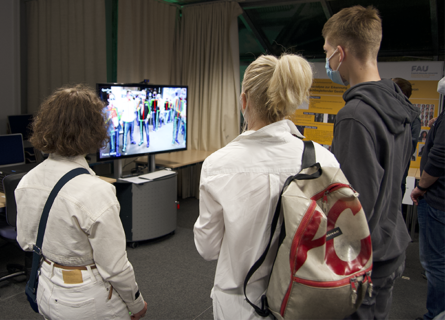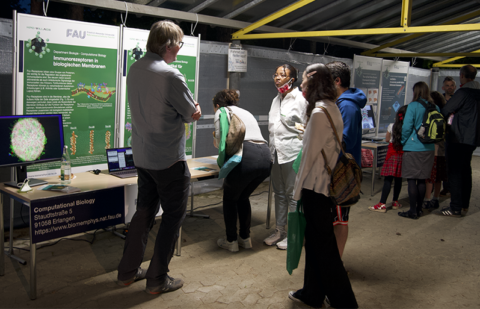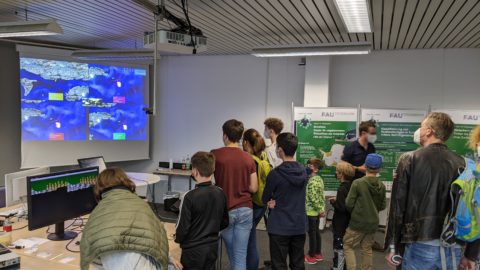HPC Village at “Lange Nacht der Wissenschaften”
On May 21, the “Lange Nacht der Wissenschaften” (Long Night of Science) provided thrilling insights into universities and companies in the greater Nuremberg area. For the tenth time, the HPC team was part of an event that offers a huge spectrum of opportunities for reaching out to the general public, explaining how their tax money is put to use for advancing computational science. After a great success in 2019 it was decided to launch a retake of the “HPC Village”: Teaming up with several high-profile customers, the technology and the exciting applications of supercomputers were showcased.
- NHR@FAU presented a five-node Raspberry Pi cluster plowing its way through a tough raytracing problem, a semi-realistic but all the more heart-stopping submarine multiplayer game with realistic fluid dynamics, and tons of cluster hardware to touch that the non-initiated usually cannot even lay their eyes on.
- The Chair of English Philology and Linguistics showed how high-performance AI methods can be used to identify which gestures typically go with spoken words, and how “deepfakes” can be employed to anonymize video data.
- The Institute of Geography demonstrated how supercomputers are used to simulate the evolution of glaciers and the antarctic ice shelf, and how forest ecosystems react to the current climate dynamic.
- The Chair of System Simulation showcased its “waLBerla” framework as an example of a flexible, parallel, high-performance software package for fluid simulations.
- The Professorship for Computational Biology shared results of numerical simulations of immune receptors in biological membranes and of lipid nanoparticles for mRNA vaccines.
- The Computer Chemistry Center demonstrated simulations of how the organism is able to repair its own DNA.
- The Professorship of Bioinformatics showed how computer simulations can unravel the mechanisms behind protein folding going awry, causing dangerous diseases such as Creutzfeld-Jakob.
The interest was overwhelming, so the scientists at the various booths had their hands full with explaining top-notch science in layman’s terms. Overall: time and effort well spent.


